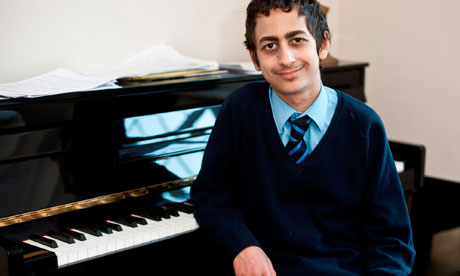
A 16-year-old boy who was born with a life-threatening immune disorder has become the first patient to benefit from a new form of gene therapy.
Doctors at Great Ormond Street Hospital in London said the treatment had only a temporary effect but was sufficient to help the boy overcome a lung infection. Remy Halbawi, who is at school in Wimbledon, south London, had been ill for two years with the fungal infection and would not have survived without radical treatment, doctors said.
Remy was born with a genetic condition called x-CGD (Chronic Granulomatous Disorder) that affects boys. Patients with the disorder have a faulty gene that disrupts a subset of immune cells called neutrophils, which act as the body's first line of defence against infection.
Children born with x-CGD struggle to fight infections caused by fungi or bacteria, and are often hospitalised with severe infections in the first few years of life. A bone marrow transplant from a suitable donor is the only cure for the condition.
"The life expectancy of patients is around 30 years, but one of the issues is that these patients have years of chronic ill health," said Professor Adrian Thrasher, a senior member of the team.
Remy's brother, who inherited the same condition, has been cured with a bone marrow transplant, but doctors at Great Ormond Street Hospital have yet to find a good donor for Remy. His condition was so serious that in June last year they decided to use an experimental gene therapy technique to replace the faulty gene with a working copy.
The hospital had previously used an older form of gene therapy to treat four children with x-CGD, but had since developed a new treatment that they hoped would be safer and more effective.
To begin the treatment, doctors gave Remy drugs to make his bone marrow release stem cells into his bloodstream. These stem cells give rise to all the cells that make up the human immune system.
Having collected the stem cells from Remy's blood, the doctors infected them with a newly developed, genetically modified virus that carries a correct copy of the gene that is faulty in x-CGD. The virus was designed to minimise its chances of switching on cancer genes – a problem that plagued earlier trials on children with SCID, another immune disorder.
After a mild course of chemotherapy to kill off some of the faulty immune cells in Remy's body, doctors injected the transformed stem cells. These boosted his immune system temporarily, but for long enough to help tackle his lung infection.
"This is the third immune disease to respond to gene therapy in our programme," said Professor Adrian Thrasher. "In the future we want to use a stronger dose of chemotherapy, so we can achieve what we would hope to be a lifetime cure."
The doctors have now drawn up plans for a European clinical trial, with hospitals in Frankfurt, Paris, Zurich and London treating five patients each. The trial, in collaboration with a French non-profit organisation called Genethon, is expected to begin next year.
"It's wonderful to see this work come to fruition and know that gene therapy is being used to help very seriously ill patients with CGD," said Susan Walsh at the CGD Society.

